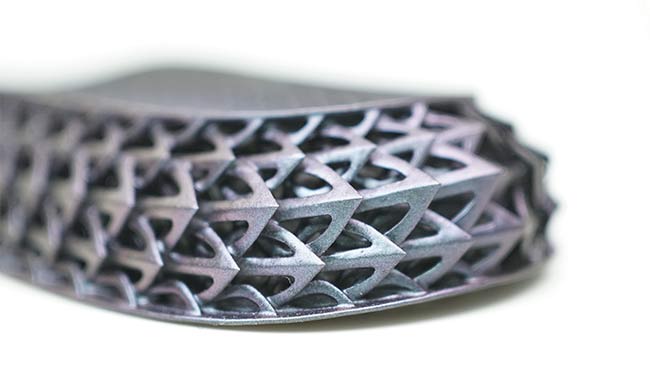Long used to cut, modify, or weld parts, photons are increasingly helping to fabricate them whole from raw materials.
HANK HOGAN, CONTRIBUTING EDITOR
 Additive manufacturing, aka 3D printing, offers an alternative to conventional manufacturing and assembly methods by building products layer by layer. In addition to enabling heretofore impossible part geometries, the technology also hints at a future in which items could be fabricated anywhere, as needed, from a digital blueprint.
When applied to polymer materials, the technology is finding application in products ranging from footwear to automobile components. When applied to ceramics, it’s shaping custom dental products. Additive manufacturing is even extending to the fabrication of metal parts designed for medical instruments, cars, and aircraft. Today, most 3D-printing applications target rapid prototyping because the technology can produce sample parts quickly from computer models that can easily be customized and shared. Though less common, the manufacturing technique is increasingly being used to produce finished products, allowing for greater customization, reduced assembly costs, streamlined supply chains, and easier inventory management.
Additive manufacturing, aka 3D printing, offers an alternative to conventional manufacturing and assembly methods by building products layer by layer. In addition to enabling heretofore impossible part geometries, the technology also hints at a future in which items could be fabricated anywhere, as needed, from a digital blueprint.
When applied to polymer materials, the technology is finding application in products ranging from footwear to automobile components. When applied to ceramics, it’s shaping custom dental products. Additive manufacturing is even extending to the fabrication of metal parts designed for medical instruments, cars, and aircraft. Today, most 3D-printing applications target rapid prototyping because the technology can produce sample parts quickly from computer models that can easily be customized and shared. Though less common, the manufacturing technique is increasingly being used to produce finished products, allowing for greater customization, reduced assembly costs, streamlined supply chains, and easier inventory management.
Member Exclusive: To read the complete article, please Login or Register